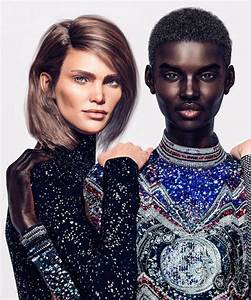Digital Clothes The Hottest Fashion of the Century
People Are Buying Digital Clothes Because That’s a Thing Now
The latest in fashion is not made with threads and textiles, but with pixels and programs.
Digital fashion makes everything traditional fashion does—shirts, dresses, pants, hats, shoes, and accessories—but none of it is tangible. Instead, customers “wear” digital clothing through augmented reality and digitally altered photos.
One Of The Most Popular Accessories in Fashion Game ‘Shining Nikki’ Is This Gun
People have been putting on digital accessories through social media filters for years, and the gaming skins market—where players of games like Fortnite purchase custom outfits, or “skins,” for their avatars—is estimated to be a multibillion dollar industry. Then there’s Facebook’s recent announcement about its plans for a metaverse. Though it sounds strange and futuristic, the merging of the digital and the physical is happening right now.
Now, designers are creating more reality-bending digital fashion pieces for people to don as ways to express themselves and push creative boundaries. Digital fashion, one might say, is getting a little more real.
“Usually, when you buy clothes, you have to consider the fit, how it would look in pictures, and, sometimes, how ethical the purchase is. I don’t need to worry about being ‘too big’ for digital fashion or whether [it] was made in a sweatshop,” Shetty told VICE.
Shetty said he purchased his first few digital fashion pieces on DressX, a company that was launched in August 2020 and now sells their own designs as well as collaborations with various digital designers.
DressX customers can try the digital clothes through augmented reality. If they decide to purchase, they upload a photo of themselves to the website or app then, in one to two days, receive the photo with their digital fashion piece professionally edited onto their bodies, ready for posting on social media.
“Our goal is to give every person their digital closet,” said DressX co-founder Natalia Modenova.
She and co-founder Daria Shapovalova are based in Los Angeles and previously worked in the fashion industry, where they saw a number of problems they wanted to solve.
The fashion industry is in a state of environmental and social emergency, according to the United Nations Economic Commission for Europe. The commission estimates that 20 percent of global wastewater is produced by the fashion industry, which also emits 10 percent of global carbon emissions. The textiles industry has been identified as a major contributor to plastic waste in the ocean, and fast fashion is notorious for its dangerous working conditions.
Digital-only fashion houses will still have to reckon with other energy-intensive processes in the digital world, like the creation of NFTs, but Modenova and Shapovalova said they found solutions to many of the industry’s problems in digital fashion, which lets people “wear” new and exciting clothes as often as they want to, without the clothes having to be physically produced.
Shapovalova predicts that in the future, everybody will have digital clothing “which you can wear on social media, on still images, on video calls, online conferences, and soon, in gaming and other multiverses.”
Another advantage of digital fashion, Shapovalova said, is that it allows more designers to launch their careers without the big costs of physical production—exactly what happened to 3D artist Stephy Fung.
Fung, who’s based in London, was commissioned to create the 3D environments—things like texturing, camera animation, and lighting—for a digital fashion campaign.
“At the time, I didn’t know how to create digital fashion, [but] I was fascinated and excited from watching the digi-fashion designers create clothes from nothing. It was only then that I realized that my 3D skills were complementary to digital fashion,” Fung said.
Today, Fung “wears” her own digital fashion designs.
“I wear them digitally because I want to illustrate what is possible with digital fashion and also because the digital clothing makes me look way cooler than I do in real life,” she said.
How Much Does ‘Instagram Face’ Really Cost?
10.11.21
“You can wear clothes that float and have no gravity. You can have outfits that glow different colors. You can have outfits that animate with different words or patterns—the possibilities are endless and fun.”
Roei Derhi, founder of the digital fashion house Placebo, and whose designs have also been featured on DressX, thinks that digital fashion takes people to different worlds.
“I think the best part of digital fashion is that there is an escapism effect in it. Digital fashion is bigger than reality and makes people not only wear clothes, they wear fantasies,” Derhi said.
He believes that digital fashion is also a more sustainable way of creating content for social media, which drives plenty of fashion purchases today.
According to a study by United Kingdom-based online banking company Barclaycard, almost one in 10 British people revealed that they have bought clothes online only to wear them once, with the aim of posting a photo on social media, then subsequently returning the purchases.
Doddz, who discovered digital fashion while researching ways fashion brands can use augmented reality, thinks it’s only a matter of time before digital fashion is adopted by the fashion-conscious in the real world. He noted how people already wear virtual sunglasses and hats through Instagram filters, and how brands like Louis Vuitton and Balenciaga have gotten in on the gaming skins industry.
Last Year, COVID Racism Came for Wet Markets. Now, Prada Is Trying to Make Them Cool.
10.07.21
“Why would anyone interested in fashion not be interested in wearing the most beautiful garment that’s physically impossible to make, with floating objects all around you?”










